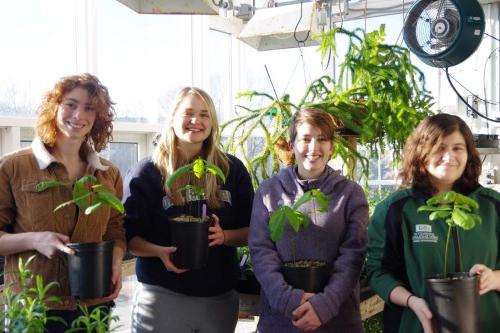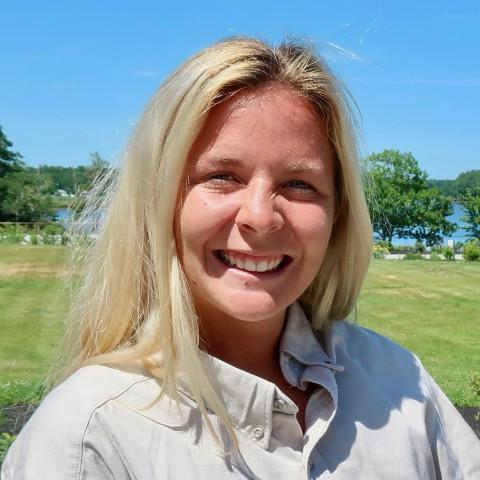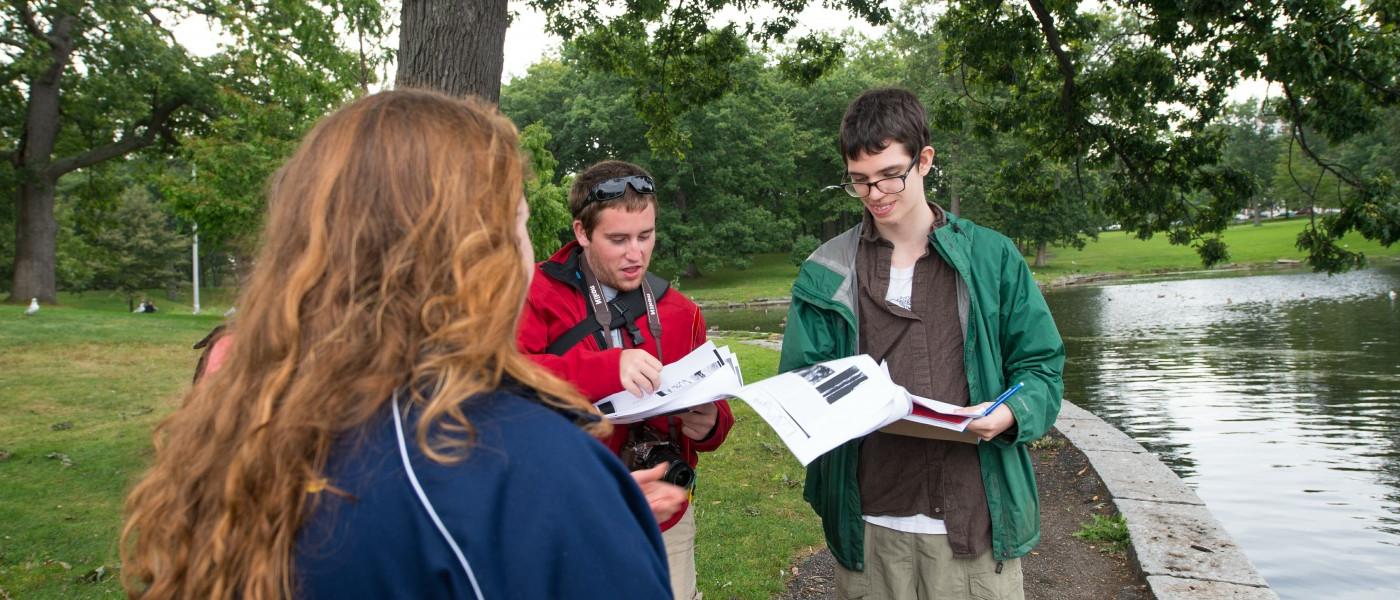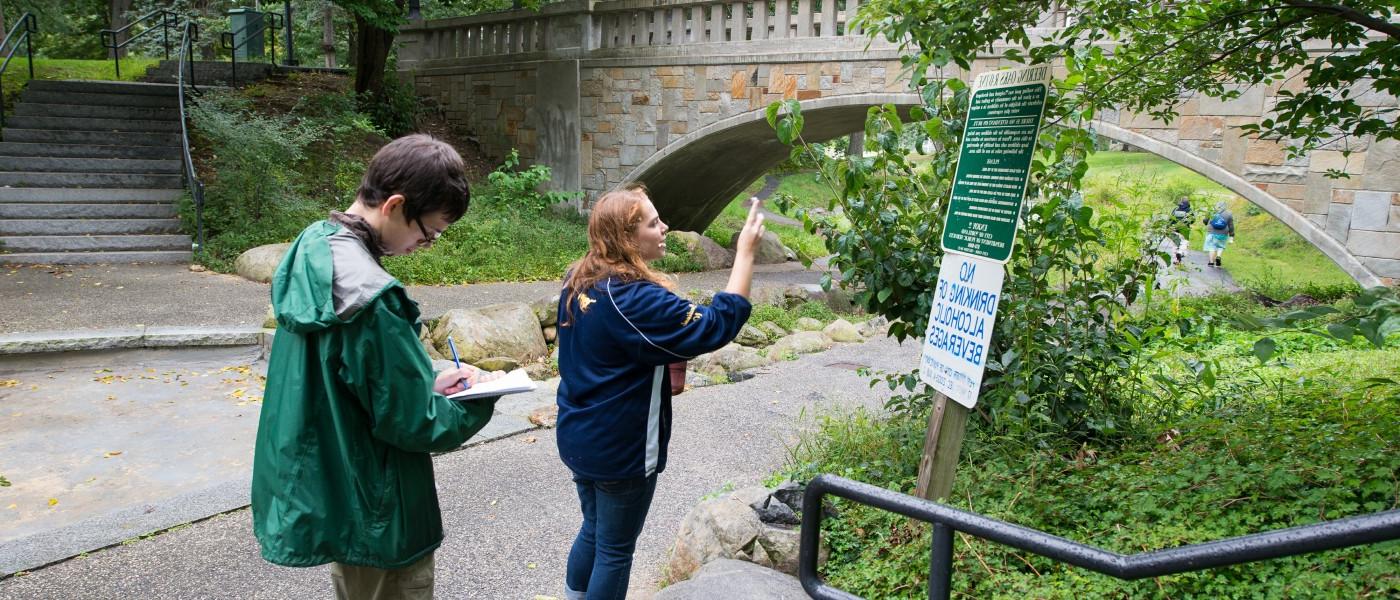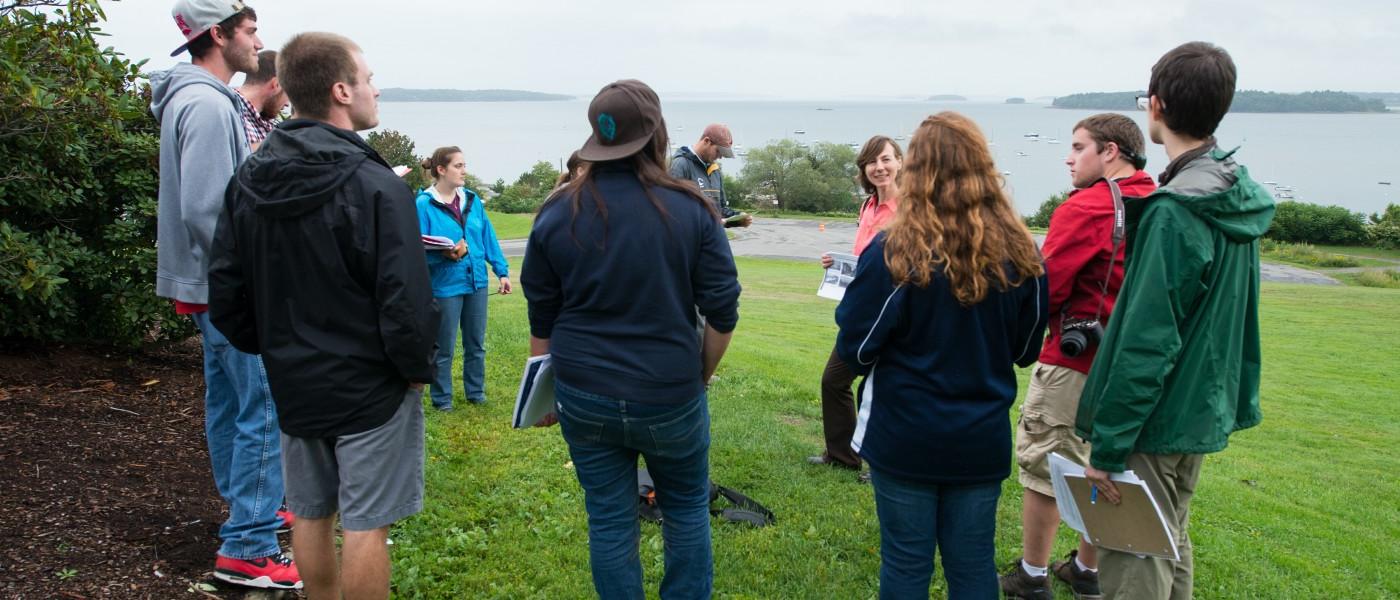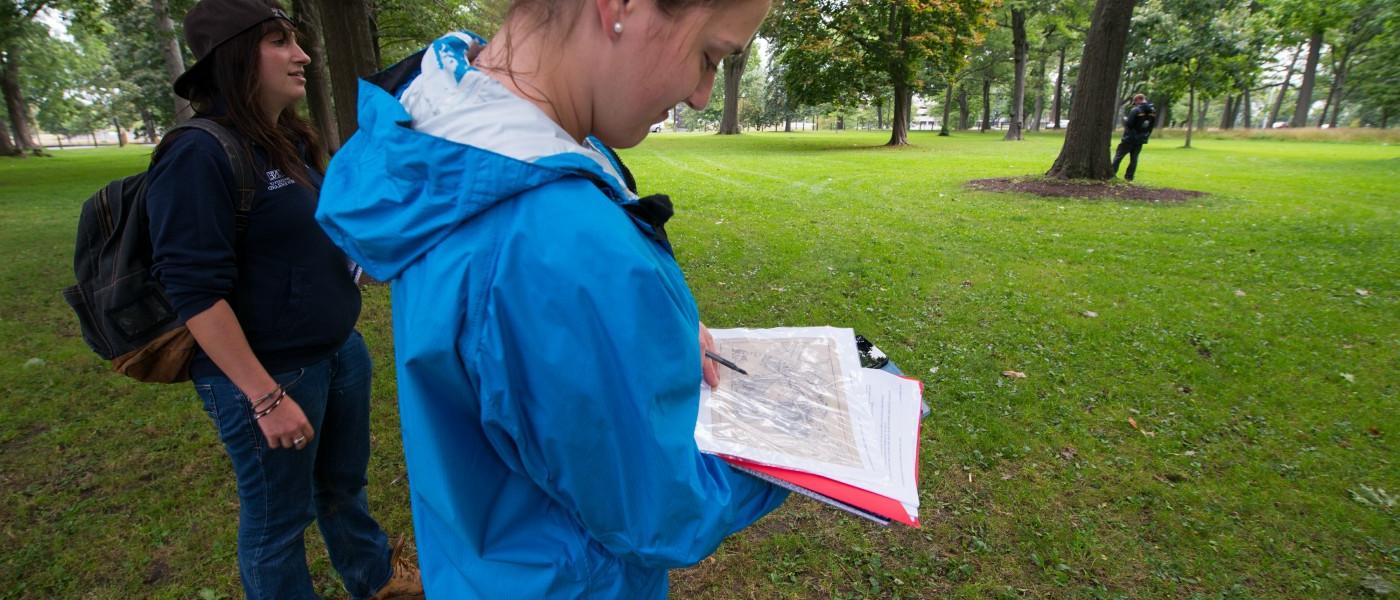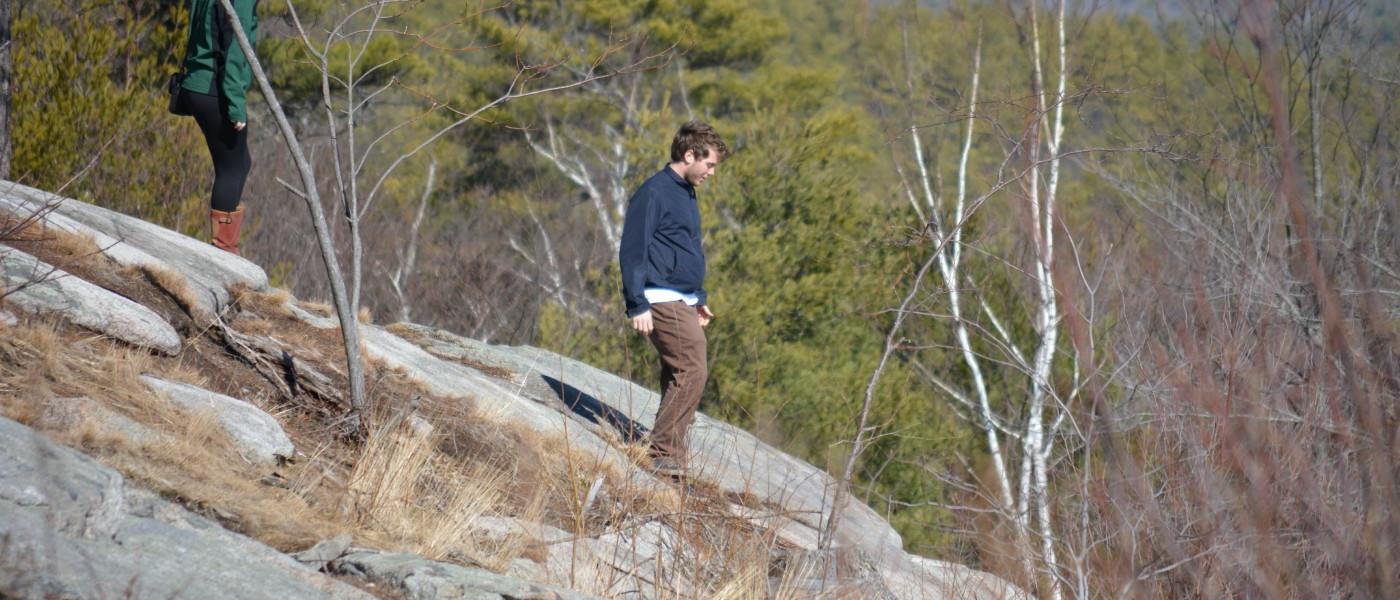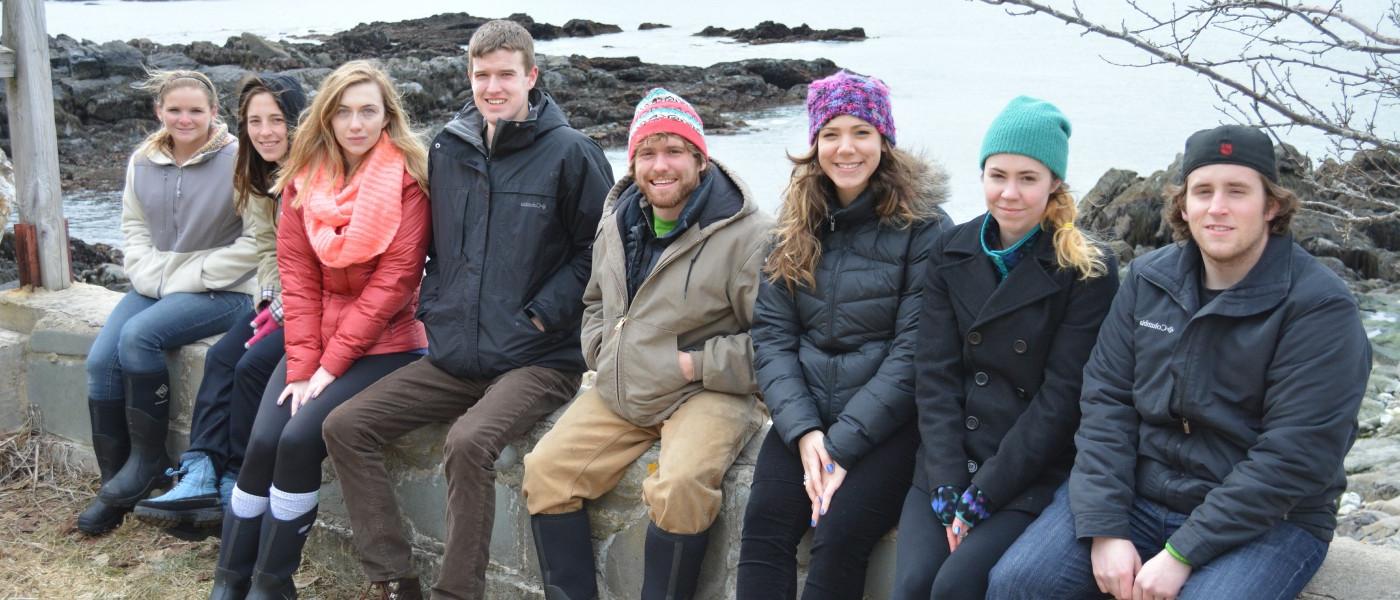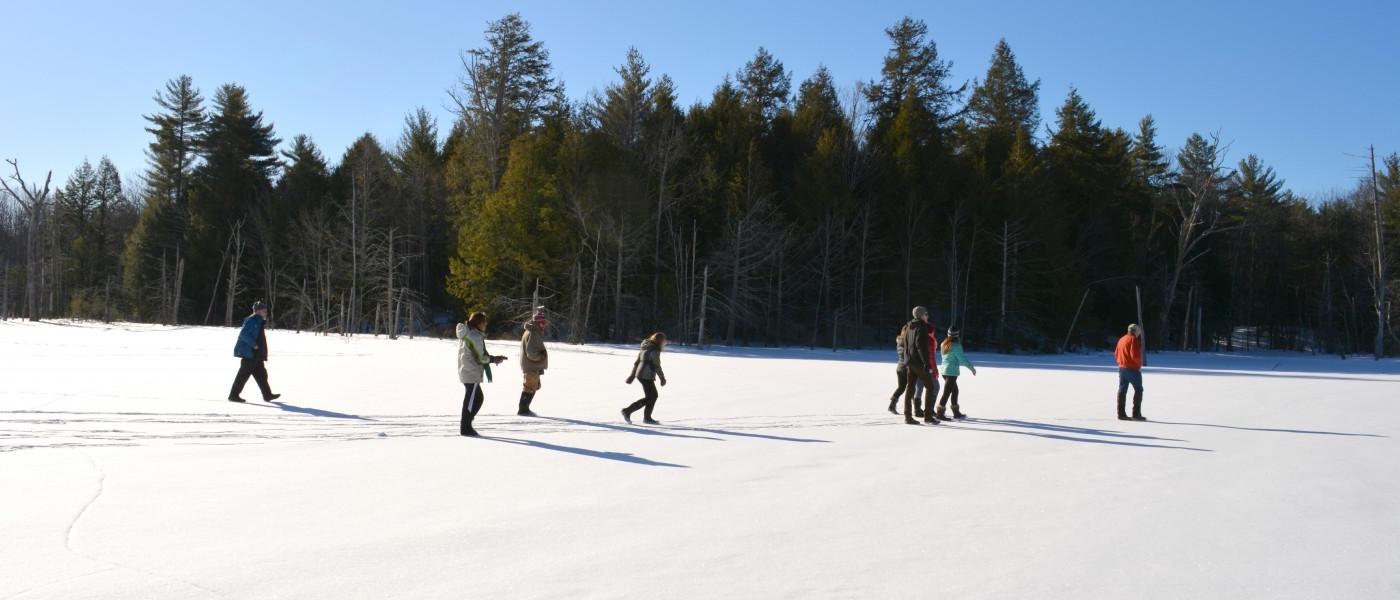Learn Conservation and Sustainability on the Maine Coast
On UNE’s unique coastal Maine campus, you’ll be reminded every day of the importance of your education as an Environmental Science major. With a 540-acre natural wonderland for you to explore, our program combines natural sciences, social sciences, and the humanities to teach you about conservation, preservation, and restoration of ecosystems; environmental and economic sustainability; and climate change.
From the oceans to the forests, riverbanks, and marshes, our campus is your living laboratory for studying the science you’ll need in your professional quest to address the health of our planet.


Why UNE for Your B.S. in Environmental Science
A diverse array of on-campus habitats, including dunes, wetlands, 363 acres of deciduous and coniferous forest, a mile of coastline, and our University-owned island, are home to flora and fauna that provide almost limitless opportunities for research and fieldwork, including:
- Hands-on, problem-based learning with strong local applications
- First-year interdisciplinary Green Learning Community
- Opportunities to gain professional skills by working collaboratively with partner organizations on conservation projects in southern Maine
- Local, national, and international internships
- Senior capstone class
What Will You Study? Environmental Science Degree Curriculum Overview
There are many ways you can navigate this major.
B.S. in Environmental Science Courses
The following are some examples of the exciting courses that you can take as an Environmental Science major:
- Climate Change: Causes, Consequences, and Solutions
- Conservation and Preservation
- Advanced Field Methods in Avian Ecology and Conservation
- Sustainability and Ecological Restoration
- Ecological Monitoring
- Wetland Conservation and Ecology
Secondary Science Teaching Certification
If you are interested in becoming a middle school or high school science teacher, you may select the necessary courses in secondary education as electives, and complete the teaching internship required to qualify for State of Maine certification (grades 7–12) upon graduation.
Double Majors With Your Environmental Science Degree
As an Environmental Science major, you may opt to double major in another discipline. This popular way to enhance your career preparedness allows you to complete both degrees in four years and prepares you for the complexity of real-world environmental challenges.
For more information including current double major requirements and course sequences, contact the environmental studies department.
Popular Double Majors
Green Learning Community
The Green Learning Community (GLC) is an intentional community of professors and first-year students dedicated to studying human relations to the environment. The year-long experience integrates courses in biology, environmental issues, literature, and economics.
In classes, you will find the same topic presented from different perspectives. You learn about the environment in an atmosphere where your opinions are welcomed and valued by supportive professors who foster a sense of community.
Much of the learning you do through the GLC takes place outside the classroom. The community-building experiences begin early in the fall with a retreat to Bryant Pond where you explore your individual goals for learning while collaborating in outdoor activities like hiking, paddling, and working through a ropes course. Additional field trips throughout the year take you to places like the Wells National Estuarine Research Reserve, Wildlife Conservation Lands, and the Portland Trail System.
The small class sizes in the GLC allow you to receive individual attention and instruction that help develop your academic, research, and communication skills.
Helping Farmers, Birds Co-Exist
Discover UNE’s 363-Acre Forest
Career Paths for Environmental Science Majors
Through environmental science coursework, research performed beside our experienced faculty, and internships, you’ll acquire the knowledge as well as the analytical, communication, and life skills you’ll need for a career in the growing environmental science field.
As an Environmental Science major, you may pursue a number of rewarding professions, such as:
- Ecologist
- Forest Ranger
- Air and Water Quality Manager
- Environmental Analyst
- Wildlife Manager
- Environmental Scientist
Career Advising for B.S. in Environmental Science Students
Whether you have a specific career goal in mind or a vague idea of the field that interests you, Career Advising is here to help you plan your next step.
B.S. in Environmental Science Degree Facilities
Within a short walk or drive from UNE’s Biddeford Campus, you may explore a variety of unique habitats, including the University’s 363 acres of contiguous forest. The State of Maine Natural Areas Program has labeled the land a “habitat of significant value” due to its high density of pocket swamps and vernal pools. The area contains both uplands and wetlands, and is home to many species, including wild turkeys, deer, coyotes, and moose.
UNE is also home to the renowned Arthur P. Girard Marine Science Center which boasts top-notch seawater facilities, laboratories, classrooms and offices right in the heart of the Biddeford campus. The center offers 27,550 square feet across two floors for teaching, learning, and research. Our tidal pumping system and 550,000-gallon storage tank enable flow-through seawater to be distributed to classrooms and labs, ensuring realistic environmental conditions for research.
Our Biddeford Campus is also your stepping stone to some of Northern New England’s most intriguing ecosystems.
Experiential Learning in the Bachelor’s Degree in Environmental Science Program
Whether you’re knee-deep in a vernal pool, collecting data in a salt marsh, or advocating for environmental protection, UNE’s bachelor’s degree in Environmental Science emphasizes learning by doing. Come get your hands dirty and your feet wet.
Clubs for Environmental Science Majors
- Marine and Environmental Programs Club: Gives students an opportunity to become more involved and familiar with the marine and environmental science programs at UNE by connecting club members with both faculty and other resources. This club provides opportunities for upperclassmen marine and environmental studies program students to connect with new/underclassman marine and environmental studies students, meet and connect with professors to learn about research opportunities, learn about internships/job opportunities, build resumes, become familiar with all aspects of the marine and environmental studies programs, learn more about resources available, such as tutoring, and host events/community service projects related to marine and environmental programs.
- Earth's ECO: A group of environmentally conscious students who work to inform and engage the community in activities related to the environment and raise concerns about issues such as conservation, pollution, and climate change. The club advocates for people to get out into nature to appreciate its beauty and become passionate about its conservation.
- Honeybee Conservation Club: A club dedicated to promoting and organizing educational and hands-on learning activities related to honey bee conservation and bee-keeping skills. The club will work with other environmentally-oriented organizations such as Earth's ECO and the Edible Campus Initiative to maintain a healthy bee colony and contribute to UNE's overall sustainability.
Research for B.S. in Environmental Science Students
No matter what your interests are — examining the ecology of the tidal marshes in our own backyard, studying gulls that nest on roof-tops in nearby Portland, or working with Kenyan partners on community conservation projects — there is always a variety of faculty research for you to participate in.
Internships for Environmental Science Majors
Local, national, and global internships enable you to put your classroom learning to work by building life skills, networking in the field, and exploring career options.
For more information email the Academic and Career Advising Center at advising@365dafa6.com.
Center for Sustainable Communities
The Center for Sustainable Communities is an internship and service-learning program that creates mutually beneficial partnerships between students and environmental organizations in the communities surrounding UNE's Biddeford Campus. Through hands-on involvement with local governments, nonprofit organizations, and community groups, you field-test academic learning in situations that help you “think globally, act locally.”
Possible internship sites
B.S. in Environmental Science Fieldwork
Field Trips
Many upper-level environmental science degree courses include a significant field component. Through our environmental science classes you might participate in any of the following:
- Weekend visit at an ecovillage
- Conferences, such as the International Society of Tropical Foresters/Yale School of Forestry and Environmental Studies Yearly Conference
- Overnight camping trips to UNE’s 350+ acre property and to the White Mountains
- Visits to the offices of land conservation nonprofit organizations
- Wetland surveying and monitoring at local bogs, freshwater marshes, salt marshes, riparian areas, and red maple swamps
- Service Learning Trips with Cultivating Community, a nonprofit in Portland, Maine working in urban agriculture, youth leadership training, and sustainability
- Field trips to local incinerators (Eco Maine in Portland and MERC in Biddeford)
- Field trips to local Community Supported Agriculture Farms
- Field trips to the Biddeford Recycling Center
- Service Learning trip to York County Shelter, Inc. in Alfred, Maine
- Field Trips to Portland Trails and hiking along the Presumpscot River Trail in Portland
- Field Trip to Liberty Farms to see a horse-logger operation in Saco, Maine
- Field trip to the Maine Forest Service office in Alfred, Maine
Field-Based Environmental Humanities
Our Environmental Humanities field trips allow you to step outside the classroom to immerse yourself in natural and human-constructed environments that enhance your understanding through direct experience.
From your first semester, you explore the local natural landscape through different literary, historical, and philosophical lenses. For example, you might read Henry David Thoreau and then visit the Beaver Pond Trail, a local wildlife commons created and managed by a member of the faculty.
In your study of environmental history, you read characteristic New England landscapes — forests, coastlines, and waterfront cities — to learn how past interactions between humans and nature give significance to the places we inhabit today. You explore how an understanding of the past informs current environmental issues.
During these excursions, you:
- Explore the ocean surf and tide pools where the first Europeans wintered in North America.
- Paddle the Saco River through the foothills of the White Mountains.
- Bushwhack across a forest to reach Maine’s largest American Beech tree.
- Canoe a glacial cirque lake closely resembling Walden Pond.
- Tour by boat the historic canal system and walk the historic textile factory floor of Lowell National Historic Park to examine how 19th-century industrialization affected river conditions and laborers’ lives.
- Read the forested landscape, searching for remnants of historic agriculture and forestry practices, and converse with longtime residents to understand the forest past and inform current conservation.
- Tour urban parks and green spaces, expanding your appreciation of these places by retracing past visions and debates over their development.
- Walk the coastline and trails of a historic salt marsh farm to explore the historic importance of past resource management decisions on coastal ecosystems and communities.
Global Education in the Bachelor’s Degree in Environmental Science
Aside from UNE's opportunities to spend a semester abroad, you find two travel courses — a fall semester course in Dominica and a spring semester course in Kenya. To enroll in these courses, you must submit an application to the Global Education Program. You are encouraged to apply for a Global Education scholarship when applying to these courses.
Apply Today
Ready to begin your future in UNE’s B.S. in Environmental Science degree program?
